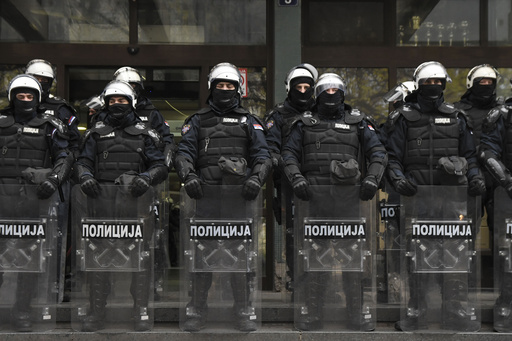
BELGRADE, Serbia — The tragic collapse of a concrete roof at a railway station in Novi Sad, Serbia, has ignited public outrage and intensified tensions throughout the Balkan nation. The incident, which occurred on November 1, has led to protests and an escalating demand for accountability, as it resulted in the loss of 15 lives.
The station, a significant transit hub, was recently updated through a collaboration between Serbian and Chinese entities. Critics have attributed the collapse to factors such as corruption, inadequate oversight, and poor construction practices. Conflicting statements from officials regarding whether the roof was included in the renovation have further fueled uncertainty, leading the public to question the maintenance of the structure.
This incident reflects a broader discontent with Serbia’s governing authority and has sparked increasing calls for transparency, particularly amid major infrastructure initiatives largely supported by Chinese state firms.
What details are available concerning the collapse?
Little has been disclosed thus far. This railway station was constructed in 1964 and had undergone two renovations in recent years as part of a larger agreement among China, Serbia, and Hungary, aimed at establishing a high-speed rail system between Belgrade and Budapest. Initially, officials stated that the outer roofing was not part of the renovation work; however, experts later contradicted this claim, presenting evidence that suggested some roofing work had indeed been conducted.
Protesters have demanded that all documentation related to the reconstruction efforts be made public.
Have any investigations been initiated?
In response to the collapse, authorities launched a probe immediately, promising a thorough investigation that would hold all parties accountable, regardless of their positions. However, no arrests have been made, escalating public frustration. Prosecutors have been tight-lipped, revealing little more than that numerous individuals have been questioned, while Serbian media have circulated unverified reports regarding the firms involved in the construction efforts.
Government officials have dismissed calls for arrests, suggesting that opposition figures are pursuing a “witch hunt” agenda and asserting that arrests must be based on credible grounds. Critics warn that the absence of immediate detentions raises concerns about potential evidence tampering.
Why are citizens protesting?
In the aftermath of the collapse, many Serbians initially participated in quiet vigils for the deceased. However, as time went on, sorrow morphed into anger, leading to widespread demonstrations across different areas and by diverse groups. Recently, protesters obstructed access to a courthouse in Novi Sad, demanding that judicial systems fulfill their responsibilities. This led to confrontations with riot police and resulted in a standoff that lasted two days.
Slogans such as “corruption kills” symbolized the protests, which called for the resignation of the government in light of the catastrophe. Protesters also left red paint handprints on government buildings, accusing the authorities of having “blood on their hands.”
How have officials responded to the demonstrations?
Experts suggest that the government is attempting to mitigate the adverse impact on its reputation by prolonging the investigation, hoping that public fury will subside. President Aleksandar Vucic of Serbia has repeatedly implored citizens to remain calm and place their trust in the institutions, stating that the investigation is intricate and time-consuming. However, he also acknowledged that “responsibility cannot be avoided.”
In parallel, law enforcement detained several activists involved in recent protests, warning that they would take a firm stand against any disturbances to public order. This approach is perceived as an effort to dissuade citizens from voicing their grievances.
What motivates the Serbia-China construction collaborations?
Through the development of roads, rail lines, and other infrastructure, Serbia aims to bolster its transportation networks with neighboring countries, while simultaneously, China intends to strengthen its economic presence in Europe.
Most agreements between Serbia and China are negotiated at a governmental level without including external bidders, with Chinese state banks frequently underwriting these projects. These financial arrangements may come with conditions that necessitate the inclusion of Chinese companies and laborers. Despite the substantial investments flowing into the developing Balkan region, concerns surrounding quality, safety, and financial viability persist, as evidenced by the recent roof collapse incident. Chinese companies involved in the renovation have stated that the collapsed concrete canopy was not part of their responsibility.
